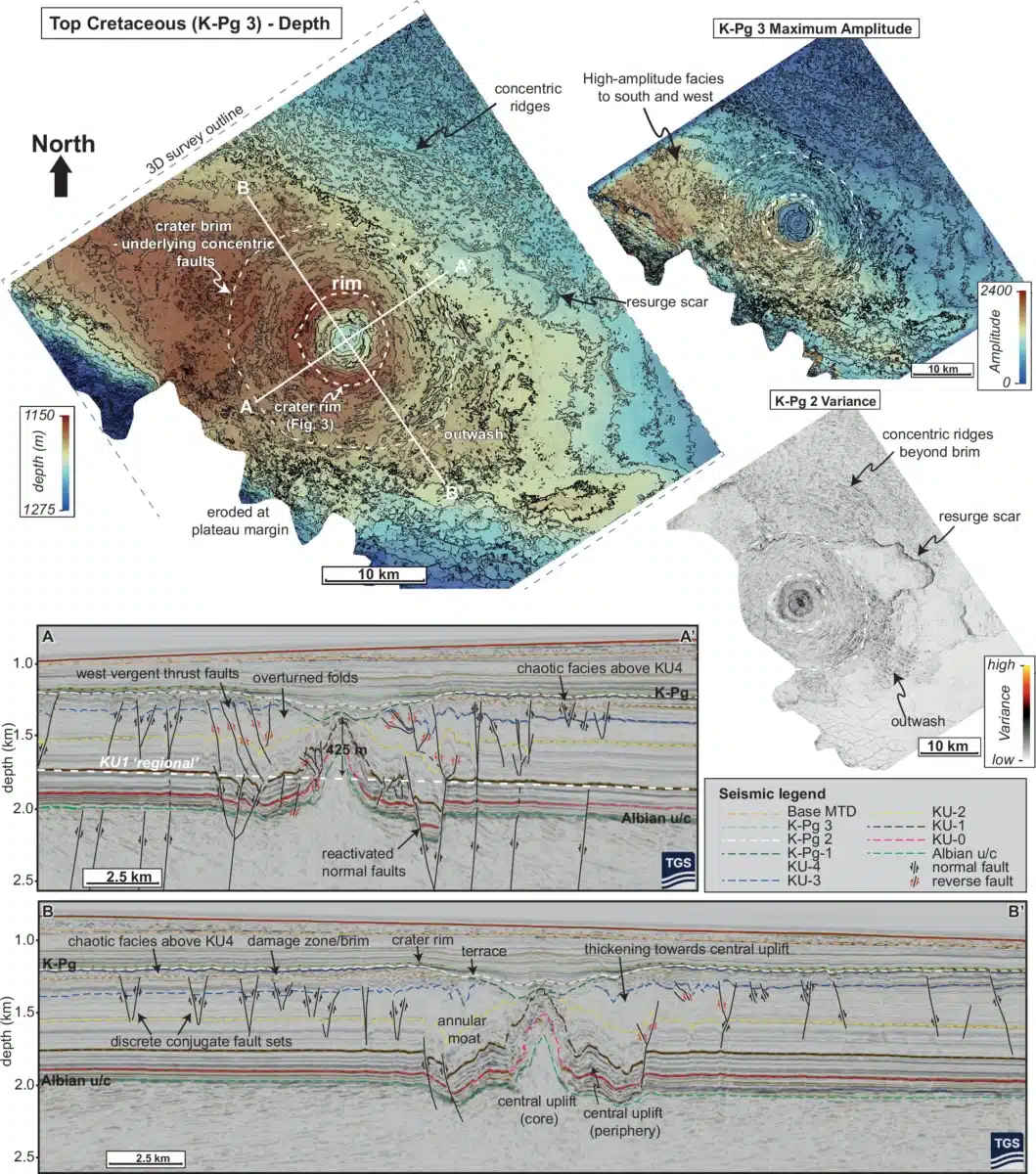A giant asteroid impact crater, sitting 300 meters beneath the Atlantic Ocean floor, has been confirmed as the result of a colossal impact from 66 million years ago. With the help of stunning data, scientists have unveiled the Nadir Crater. The timing of the impact aligns with the one that is widely thought to have played a key role in the extinction of the dinosaurs.
This breakthrough, led by researchers at Heriot-Watt University, marks an exciting moment in the study of the impact. The Nadir Crater, which spans 9 kilometers in width, gives scientists an extraordinary opportunity to understand the violent events that followed an asteroid strike.
The Story of the Nadir Crater
In 2022, Dr. Uisdean Nicholson, a researcher at Heriot-Watt University, stumbled upon something remarkable while examining seismic data from the Atlantic seabed off the coast of Guinea. What started as a curious circular depression, measuring over 8.5 km across, quickly turned into a potential breakthrough when Dr. Nicholson suspected it might be the site of an ancient asteroid strike.
The hole, now known as the Nadir Crater, rests roughly 300 meters beneath the ocean floor. After further analysis, the researchers were able to confirm that it was indeed created by an asteroid impact around 66 million years ago.
its size is about 9 km wide, points to an asteroid that was likely 450–500 meters in diameter—comparable to the Chicxulub impact, the infamous asteroid linked to the extinction of the dinosaurs. While these two impacts were distinct, their similarities—timing and scale—add another layer to our understanding of mass extinction events.
 A map showing the Nadir Crater’s position, integrated with seismic and well dataset. Credit: Nature Communications Earth & Environment.
A map showing the Nadir Crater’s position, integrated with seismic and well dataset. Credit: Nature Communications Earth & Environment.
The Immediate Aftermath: Tsunamis, Liquefied Rock, and Chaos
Thanks to cutting-edge 3D seismic imaging provided by the geophysical company TGS, scientists have been able to reconstruct what likely happened in the minutes and hours following the asteroid’s impact.
In their analysis published in Nature Communications Earth & Environment, Nicholson and his team, the impact triggered molten rock to surge upwards, causing a massive zone of fractured rock to spread outward across thousands of square kilometers. The seismic data also revealed a catastrophic tsunami sweeping across the Atlantic.
But it didn’t end there. The impact also liquefied sediments beneath the seabed, causing them to flow inward toward the evacuated pit floor, forming a visible “brim.” Landslides ensued as the plateau margin collapsed beneath the ocean, and evidence of tsunamis traveling back toward the pit was captured in the form of large “resurge scars” on the seabed.
 The K-Pg horizon maps showcasing the surface expression of the Nadir Crater. Credit: Nature Communications Earth & Environment.
The K-Pg horizon maps showcasing the surface expression of the Nadir Crater. Credit: Nature Communications Earth & Environment.
A Unique Research Opportunity for the Future
What makes the Nadir Crater so special is its preservation. Unlike impact on land, which are often eroded and obscured by centuries of geological processes, it has remained largely intact beneath the ocean. For researchers like Dr. Nicholson, it’s an unprecedented opportunity to test long-standing hypotheses about asteroid impacts and formation.
In fact, the team is planning a drilling expedition to recover cores from the basin’s seabed. These cores will provide even more information about the shock pressures involved in the impact and help them refine the models they’re using to understand how such holes form and evolve over time. He notes that:
“craters on the surface are usually heavily eroded and we can only see what is exposed, whereas craters on other planetary bodies usually only show the surface expression”.
